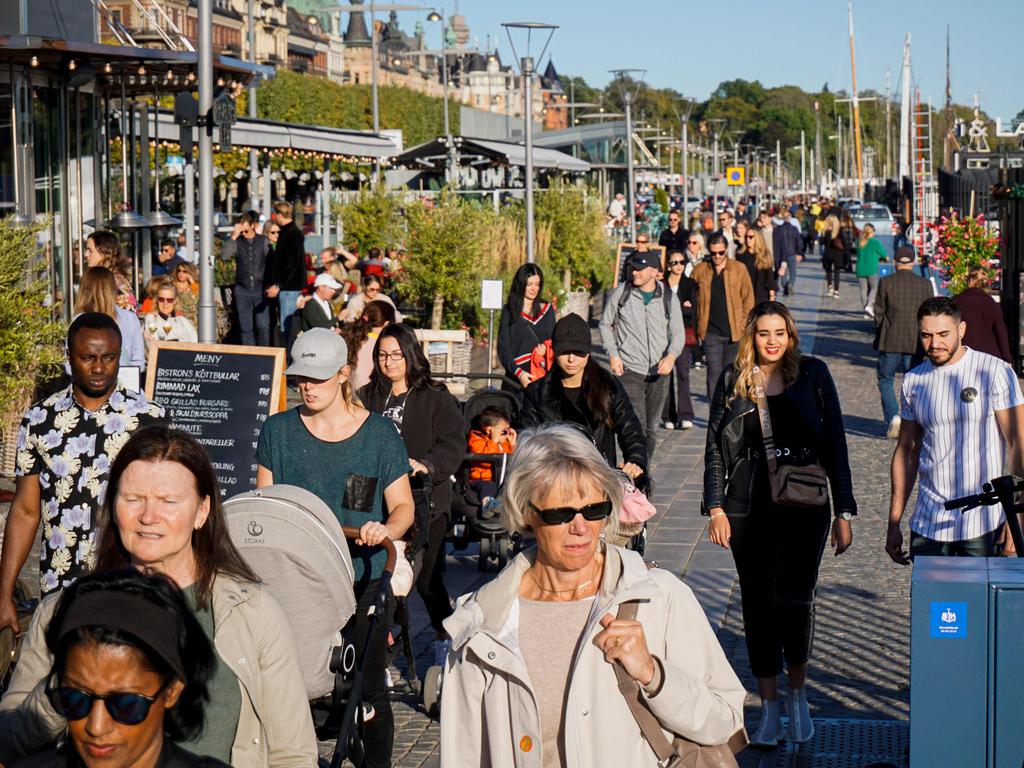
Melbourne University Professor Jodie McVernon, head of epidemiology at the Doherty Institute, says “only a fool” would rule out a third wave in Victoria when the state finally does emerge from its current second wave.
Professor Raina MacIntyre of the University of NSW predicts that the normal pattern of recurring bouts of infections in such pandemics will play out. She describes the cycle as: mass infection followed by severe social distancing and isolation, testing and tracing which gets the infections back under control which then leads to community complacency which then triggers a renewed outbreak. This goes on until there is a vaccine.
The bald figures of the virus around the world show nations and regions that thought they had beaten the bug are coming under renewed attack by a resilient and rebounding virus.
Worldwide, COVID-19 is still growing at 300,000 new cases a day and about 5000 deaths daily.
There are now 31 million cases recorded and nearly a million deaths. This is a massive underestimation of the true death rate as countries such as Indonesia, India, Bangladesh and many others have limited testing regimes. Many victims are dying at home of COVID-induced pneumonia which is never linked to the virus. Other nations such as Iran have told bare-faced lies about their infection and death rates.
In the US, 900 to 1000 people a day die of COVID-19. When the virus first hit six months ago, it was deadlier, especially in New York and nearby states. Treatments have got better since then and other states’ hospital systems have not come under the same degree of stress, so their death rates are lower than New York’s.
However, states which did not suffer as badly in the first wave are seeing a big number of deaths in the second wave which is spreading strongly in the mid-west. Michigan now has 700 deaths per million of population, higher than almost any European nation, Mississippi has a comparable rate of 950 and Louisiana more than 1000. In COVID-19 deaths per million of population, the US has now surged past Italy and France, and has just about caught Britain.

But the second wave in Europe is also deeply concerning. France has registered more than 10,000 new cases per day. Countries which did very well in the first wave, such as the Czech Republic, have suffered more heavily in the second wave, with more than 1000 new cases per day in a population of 10.7 million. This is just about comparable with Victoria’s peak of more than 700 cases per day several weeks ago.
Central European nations have imposed tough new restrictions. Hungary’s Viktor Orban has said a “second wave is knocking at the door” and closed his nation’s borders for September, in apparent contradiction of EU regulations.
Britain’s Health Secretary Matt Hancock says his nation is at a “tipping point” with the virus and he would not rule out another lockdown. The press has reported the possibility of a two-week lockdown, though Whitehall is desperate to use a different term.
Some commentators have taken solace from the much lower death rate in Europe’s second wave than in the first.
However, hospitalisation rates have been rising in Spain, France, Britain and other nations. In COVID-19, death is a lagging indicator. As Europe’s second wave is only now just breaking, it could be expected that a surge in deaths would likely become apparent in another three or four weeks.
When infection rates began to surge in the southern US states a month or two ago, commentators similarly took false comfort from the lower death rates than in the north. But these rose in time. The figure of 200,000 deaths nationally in the US was, as recently as March, an extreme worst-case scenario. But plainly there are many thousands, perhaps tens of thousands, more US COVID-19 deaths to come.
The virus had seemed to be expelled from London a few weeks ago, but new infection rates are rising again. One lesson is that as a society releases the brakes and comes out of restrictions, this is its most dangerous time.
That is why, for all the grief Victoria has endured, it is still right to be cautious as it comes out of lockdown. And once a society emerges from lockdown, its test and trace system, and its continued observance of serious social distancing, super spreader event suppression and mask wearing remain critical if it wants to avoid a third wave, and a fourth, and the rest.
We can’t wish the virus away.








It’s the last thing anyone will want to hear. But based on contemporary international experience, Victoria could face a devastating third wave of COVID-19, as infection rates soar in Europe, the US passes the grim milestone of 200,000 dead from the virus, Israel enters a severe second lockdown with citizens restricted to within 500m of their homes and one in five Brits operating under some form of restrictions as Boris Johnson sees a second wave of infections and publicly considers a second, short lockdown.